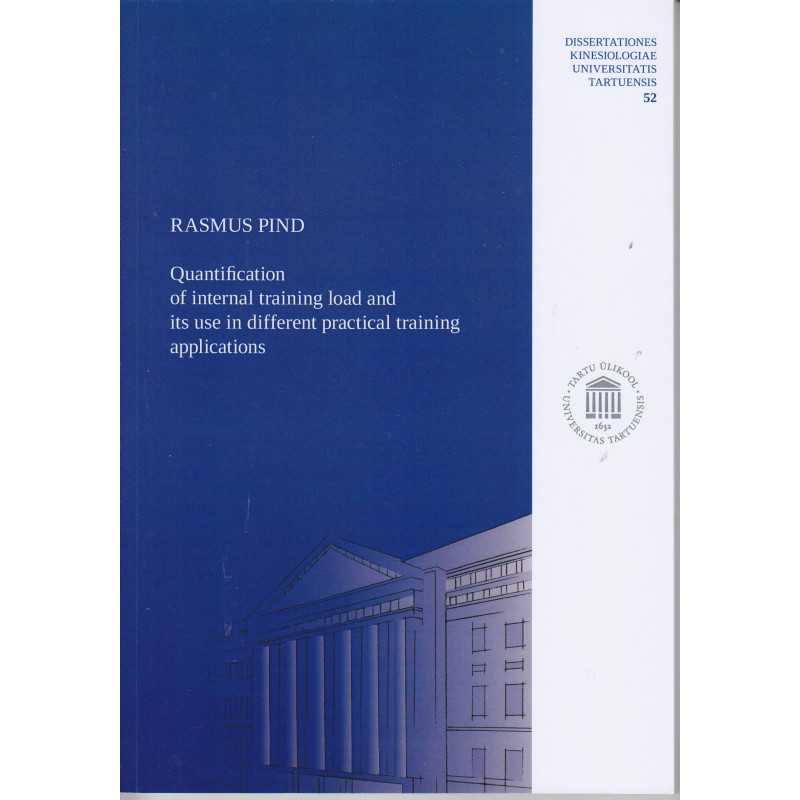



Tartu : University of Tartu Press, 2022
108 p.
ISBN: 9789949038541
Series: Dissertationes kinesiologiae Universitatis Tartuensis ; 52
Paperback, in very good condition.
Theses(doctorate). Athletes frequently use manipulations with intensity, duration, and frequency, the “golden trio”, to stimulate an adaptive response that should lead to improvements in performance. If I run the most, will I become the greatest long-distance runner? If I go to the gym more than my neighbour, will I get stronger than him? Unfortunately, it is not that simple. Excessive training usually leads to overtraining. In contrast, too small training does not provide enough stimulus to induce positive adaptation. But how to train in the most optimal way to reach the desired goal? One very important component in the training process is to measure, monitor and understand the outcome of the “golden trio” - the training load. Training load has been described as the input variable that is manipulated to elicit the desired training response. Time spent on running, the duration; or weight lifted are both associated with external training load. However, it is the relative physiological stress imposed, internal training load, that determines the stimulus for the training adaptation. Internal training load is reflected by the changes in the blood biochemistry, by the increases in heart rate or oxygen consumption. Measuring these parameters, however, require specific apparatus and are, therefore, not always feasible in practical settings. One practical method is to measure an individual’s subjective response to the golden trio, - training load. “How hard was your workout?” has been shown to provide valid answers. Internal training load is calculated by multiplying this athlete’s response to the duration of the session. Accordingly, we can then further quantify training load as Easy, Moderate, or Hard sessions. The main aim of the dissertation was to investigate training load categorization and analyse its relationships with performance and fatigue. Training with a similar external training load in young athletes resulted in a significant variation in internal load, which might affect the adaptation to training. Hard training sessions were related to improvements in performance, but in combination with Moderate sessions also increased fatigue. Additionally, subjectively rated effort quantification characterized the state of Fatigue better, compared to the heart rate- based method.